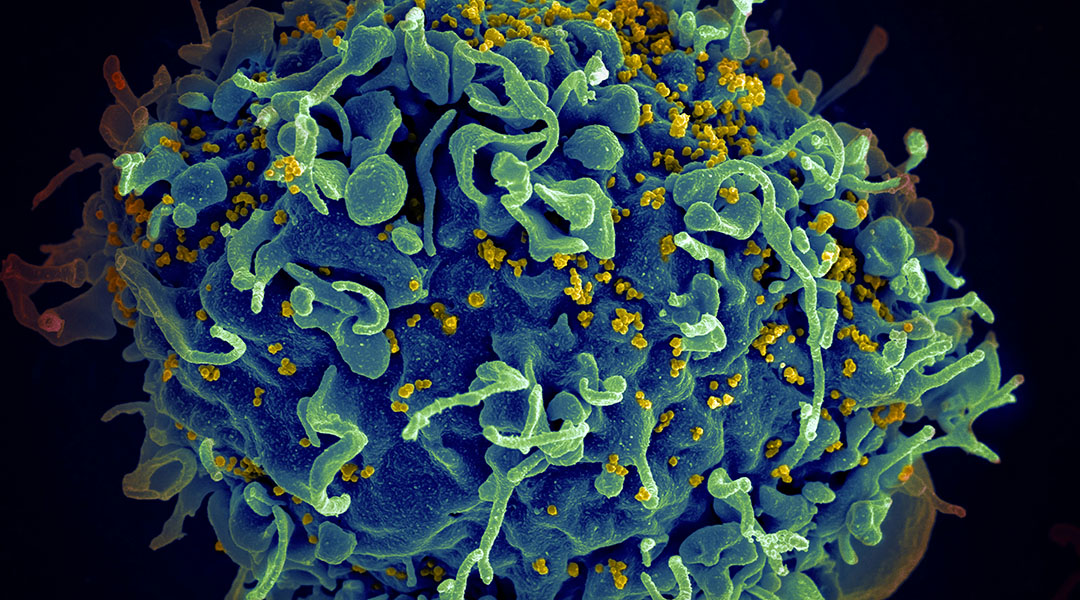For the first time, scientists have gained insights into the mechanisms underlying the immune and metabolic system imbalance in people with HIV taking prolonged antiretroviral treatment.
“Even though HIV treatment is very effective at controlling the virus, nearly half of people living with HIV still face serious health risks due to long-term immune system and metabolism problems,” explained Ujjwal Neogi at the Karolinska Institutet, Sweden.
“We identified key markers in the blood that could help predict these risks, paving the way for better monitoring and new treatments beyond just keeping the virus under control,” he added.
Omics and personalized medicine
Human immunodeficiency virus (HIV) kills the immune cells that help fight infection making a person more vulnerable to illnesses. Antiretroviral therapy reduces replication of HIV and reduces the chances of getting sick but its use over many years is linked to chronic inflammation and metabolic dysfunction increasing the risk of heart disease and neurological conditions.
Immune cell functioning and our metabolism-chemical processes in cells where food sources such as carbohydrates, amino acids and glucose are broken down into energy, are intrinsically linked. Metabolic processes are key to the activation and functioning of immune cells and immune cells themselves can change their state in response to alterations in metabolism. It is only in recent years that scientists studying HIV have focussed on understanding the dysregulation of this system in the disease, the clinical consequences of it and the mechanisms underlying it.
To determine the mechanisms of this dysfunction, Neogi and colleagues turned to omics — the study and characterization of dozens of millions of biological molecules in our cells and how they work. In what is the most extensive omics study in an HIV population of this size to date, the team analyzed blood samples to explore three categories of omics.
“Omics data (such as genes, proteins, and metabolites) is incredibly complex, with thousands of interconnected factors. Machine learning helps us detect patterns and relationships in this vast dataset that would be impossible to find using traditional analysis. For example, it allows us to identify which proteins or metabolites are consistently linked to inflammation in people with HIV.”
Using such an omics analysis is a personalized medicine approach — the tailoring of healthcare based on an individual’s clinical information and their unique genetics. Personalized medicine aims to predict susceptibility to disease and improve treatment so that it is more specific to each person and has less side effects.
Based on the omics data the team divided the study population of 158 people with HIV on prolonged treatment into two groups based on their CD4 white blood cell count and the proportion of this to another immune cell, CD8. HIV infects CD4 cells reducing their numbers and affecting immune function. The group with a lower count is more at risk of immunometabolic dysfunction than those with healthier counts. Comparing the two groups, five proteins or biomarkers were different in the at-risk group compared to the “healthy like” group.
“Our findings highlight the need for personalized healthcare for people living with HIV—treatment should not stop at viral suppression but also focus on metabolic and immune health. In the future, these biomarkers could be used in routine blood tests to detect early signs of complications, leading to preventive treatments tailored to individual needs,” remarked Neogi.
Another key aim was to understand the downstream effects of chronic inflammation in the blood of people with HIV on prolonged treatment. They explored this in two laboratory experiments-one looked at its effect on brain cells while the other analysed effects on a white blood cell called a monocyte.
From a neurological perspective, they wanted to know how metabolic dysfunction affects brain health and cognitive function. Employing a novel approach in HIV, the team treated brain organoids — laboratory grown clusters of brain cells with the participants’ blood. The laboratory experiments demonstrated that the chronic inflammatory environment of the blood causes dysfunction in the synapse space between brain cells. The researchers say this increases the chances of neurological and psychological symptoms in at-risk people.
To better understand the intrinsic link between metabolism and immune functioning, monocytes were analyzed. Monocytes, the largest of the white blood cells help fight off viruses and bacteria and are capable of developing into other types of immune cells therefore playing a pivotal role in immunity. Treating these cells with participant’s blood caused them to be consistently activated and therefore, dysfunctional, with consequences for immune functioning.
Translating into clinical care
Despite providing valuable mechanistic insights, the study’s limitations must be remembered. With a study population of mainly white Caucasians, it is unknown if the results would be the same in people of diverse ethnic and genetic backgrounds. The discovery of the five biomarkers needs to be validated in a larger diverse study to determine if they are predictors of immunometabolic dysfunction. The hope is that if these biomarkers are predictors, then by identifying at risk people, treatment can begin earlier.
Wanting to translate these findings into helping people with HIV, taking this work forward Neogi says they are conducting more research focussing on how specific metabolic pathways cause inflammation and immune dysfunction and interventions for this.
“Based on our findings, we will explore potential interventions to correct these imbalances, such as metabolic or anti-inflammatory therapies. We are developing a biomarker panel for early detection of health risks in people living with HIV, which could be used in clinical settings […],” Neogi explained.
Future research will need to follow patients over time to truly know if metabolic dysfunction predicts poor clinical outcomes and if these can be improved using new treatments.
“Realistically, within the next 5–10 years, we could see clinical applications where targeted interventions (such as metabolic therapies) become part of HIV care. However, more research and clinical trials are needed to validate these findings and develop effective treatments,“ Neogi added.
Reference: Mikaeloff, F, et al., Host Plasma Microenvironment in Immunometabolically Impaired HIV Infection Leads to Dysregulated Monocyte Function and Synaptic Transmission Ex Vivo, Advanced Science (2025). DOI: https://doi.org/10.1002/advs.202416453
Feature image: HIV, the AIDS virus (yellow), infecting a human cell. Credit: National Cancer Institute on Unsplash

















